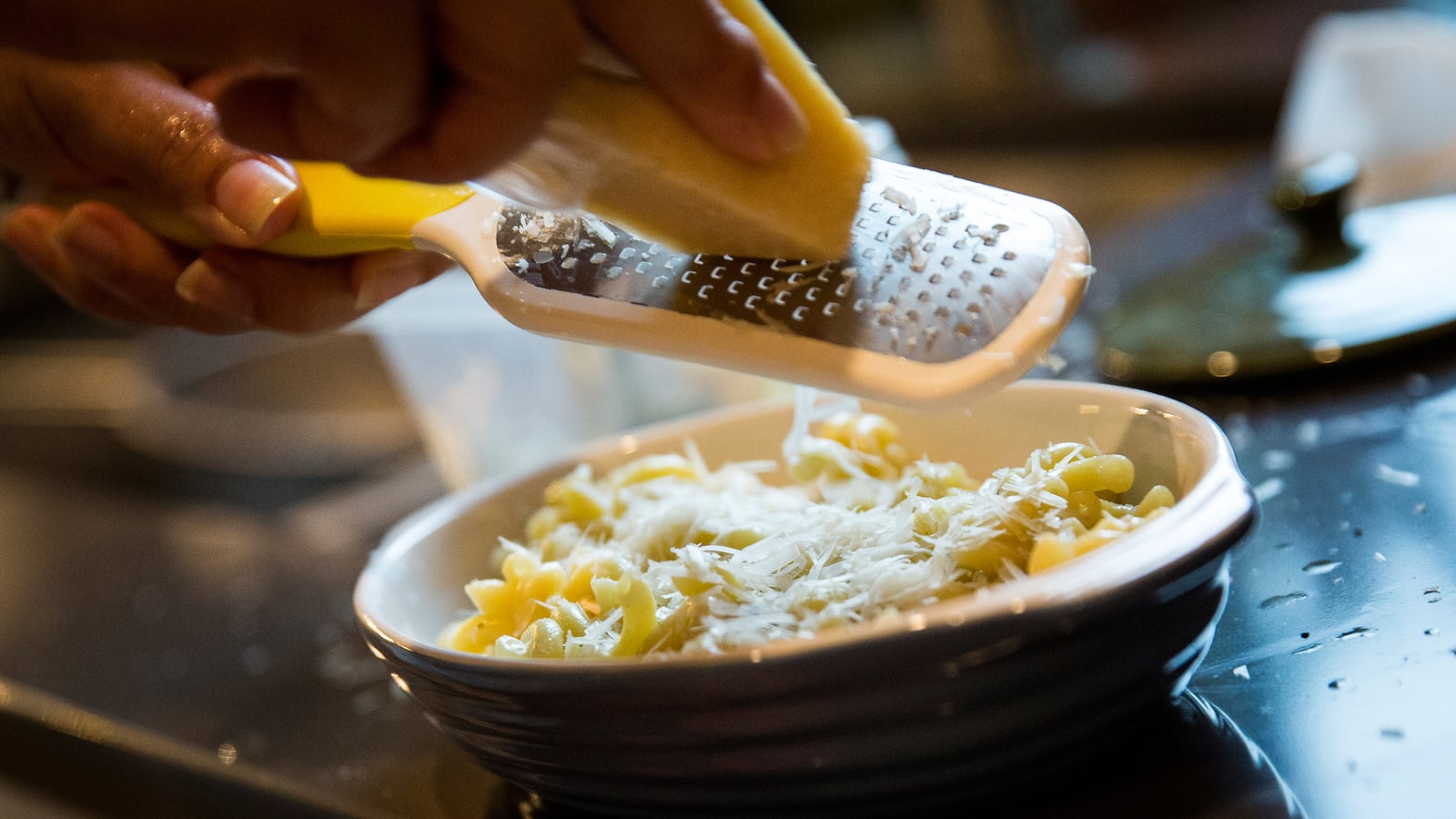If I could just find a man like Thomas Jefferson: a real Renaissance man, with sophisticated taste, a quick wit, and the ability to throw the best dinner parties… swoon.
TJ believed, as I do, that the best discussions are had around the dinner table. He preferred small groups and was not a fan of formality, serving the guests himself (via dumbwaiter) in order to avoid gossip from his staff. He also preferred round tables, claiming they were “more democratic” and avoided seating charts, usually done by class. Unlike the Adams, his menus were extensive and over the top. His tastes in booze followed suit. Most of his favorite recipes were adopted from his time in Europe. He brought back a waffle iron from Holland, imported figs, and loved the anchovy. In order to honor his memory, I thought it would be appropriate to have two recipes this week.
FOR THE BROS: MACARONI AND CHEESE
Well, it is official. Thomas Jefferson can officially be blamed for my freshman year weight gain (thank goodness this mystery has been solved). The Monticello recipe of mac and cheese is basic, at best, and does not remotely compare to any of the modern versions we eat en masse. We should still, however, give TJ huge props for starting our national obsession with this staple. During his Italian travels, he acquired a macaroni making machine (pictured). More akin to a torture device (death by carbs is certainly my preference); it cranked out semolina pasta that was then baked with ample butter and cheese. The cheese isn’t specified but we will stick with an Italian favorite, Parmesan. With the addition of two ingredients, an egg and some goat cheese, it becomes a palatable (not award-winning) homage to the original.
Boil as much macaroni as will fill your dish, in milk and water, till quite tender; drain it on a sieve. Sprinkle a little salt over it, put a layer in your dish then cheese and butter as in polenta and bake it in the same manner.
-The Virginia Housewife, Mrs. Mary Randolph, 1824.
The Virginia Housewife is often cited as the most influential American cookbook of the 19th century. Her brother, Thomas Randolph Mann Jr. was the son-in-law of Thomas Jefferson and the families spent significant time together.

My Notes:
-Preheat the oven to 400 F.
-Slowly simmer about 2 cups of macaroni in the milk (I used 2 percent). If you boil too vigorously, the milk will separate.
-Save 1 cup of milk before straining. Mix the milk with a beaten egg, lots of grated Parmesan, salt and pepper (to taste). Pour this mixture over the macaroni, mix in butter (about 1/4 cup, melted) and top with lots of goat cheese (for those who don’t like it, cheddar also works) and another sprinkle of Parmesan.
-Put in the oven for a good 15 minutes, till cheese is melted and brown on top.
FOR THE PROS: SNOW EGGS
Jefferson brought James Hemings, slave and brother of his long-term love, Sally Hemings, with him to Paris to learn the staples from the culinary greats. TJ’s love of desserts, especially ice cream, is well-documented but this recipe for snow eggs (translation: meringues in custard) will take your dessert offerings to a presidential level. It takes a bit of patience, but the result is well worth it. Here is Hemings’s original recipe for snow eggs (written out by Jefferson’s granddaughter Virginia):
Recipe: Take 10 eggs, separate the yolks from the whites and beat the whites as you do for the savoy cake, till you can turn the vessel bottom upward without their leaving it; when they are well beaten, put in 2 spoonfuls of powdered sugar and a little orange flower water or rose water if you prefer it. Put a pint of milk in a saucepan with 6 oz sugar and orange water or rose water; when your milk boils, take the whites, spoonful by spoonful and do them in the boiling milk; when sufficiently poached, take them out and lay them on a sieve. Take out a part of the milk, according to the thickness you wish to give the custard. Beat up the yolks and stir them in the remainder; as soon as it thickens, take the mixture from the fire; strain it through a sieve; dish up your whites and pour custard over them.
My Notes:
-I highly recommend rose water for the adventurous. Its gorgeous floral quality will make your dessert really stand out.
-When it says “boiling milk,” a slow and steady simmer will do the trick. A hardcore boil will likely split it.
-I prefer thicker custard (up to you) and would recommend only 2/3 of the milk to mix with the yolks. Make sure you remove the mixture as soon as it thickens.
Previous presidential recipes: George Washington & John Adams.






